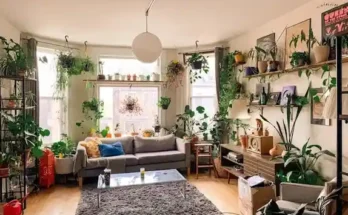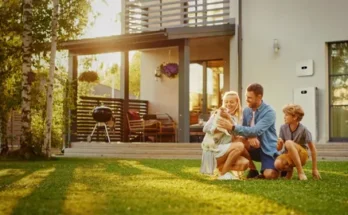No matter where in the world you go, the concept of “home” evokes a deep emotional response. It’s not just a place on a map or four walls under a roof—home is a feeling, a memory, and sometimes, even a dream. Whether it’s the smell of freshly baked bread wafting through a kitchen, the laughter that echoes in the hallway, or the worn-out couch you collapse on after a long day, home represents comfort, familiarity, and most of all, belonging.
Throughout history, the idea of home has been central to the human experience. From nomadic tribes to urban apartment dwellers, everyone seeks that one place where they can be their truest selves. But what exactly transforms a structure into a sanctuary?
The Foundation of a Home:
At its core, a house is a physical structure. You have your foundation, your beams, your drywall. But a home? That’s something entirely different. A home is built on a foundation of emotions—love, safety, memory, and identity.
You might move into a brand-new house and feel like a stranger at first. But over time, as you fill it with experiences—dinners with friends, childhood drawings on the fridge, and the faint outline of where the Christmas tree always goes—it begins to transform. It slowly becomes a living scrapbook of your life.
And here’s the magic: two homes will never be the same. They’re as unique as fingerprints, shaped not just by architecture, but by the people who breathe life into them.
The Emotional Landscape of Home:
-
A Sanctuary in a Noisy World
Life outside the home is unpredictable. The world can be chaotic, demanding, and downright overwhelming. But when you walk through your front door, home becomes the buffer. It’s your safe haven where you can shut the door on the noise and be completely at ease.
This sense of sanctuary is often subtle but powerful. Think about the way your favorite blanket feels draped over your legs on a chilly night. Or the way your favorite playlist fills the room as you clean on a Saturday morning. These small rituals build an emotional ecosystem that supports your well-being.
Home is the only place where you’re allowed to be 100% yourself—no filters, no expectations, no pretense.
-
The Memory Keeper
If homes could talk, they’d tell a thousand stories. They’d whisper about the first steps taken in the hallway, the birthdays celebrated in the kitchen, and the quiet tears shed in the bedroom. Every scratch on the floor, every photo on the wall, every dent in the corner—it’s all part of your home’s memory bank.
Homes become extensions of our personal histories. We grow up, move out, sometimes come back, and each phase leaves its mark. This emotional imprint is what gives the concept of home its enduring power.
Home as a Living and Breathing Entity:
-
Growing With You
Just like people, homes evolve. The bachelor pad of your twenties might transform into a family home filled with toys and crayon marks on the wall. The home you retire in might be quieter, simpler, and filled with items that carry decades of meaning.
Your home adapts as you do. It expands with new experiences and contracts with loss. It’s there through every chapter—your first heartbreak, your last goodbye, and everything in between.
This living quality of home makes it a lifelong companion, even if you move from one house to another. It’s not always the structure you miss—it’s the version of yourself that lived there.
-
When Home Is a Person or a Feeling
For some, home isn’t tied to a specific place. It’s found in a person’s embrace, a shared glance, or a sense of purpose. Refugees, travelers, and even astronauts speak of “carrying home with them,” because sometimes home is wherever the heart finds peace.
That’s the beautiful paradox of home—it can be stationary or mobile, permanent or fleeting. You might find home in a bustling café in a foreign city, in the arms of your dog after a long day, or in the rhythm of a familiar song.
Creating a Home That Reflects You:
One of the most exciting parts of having a home is making it yours. Your style, your colors, your memories. Interior design isn’t just about aesthetics; it’s a form of self-expression. A bookshelf isn’t just a piece of furniture—it’s a window into your mind. That quirky lamp? A reflection of your humor. The mismatched mugs in your cupboard? A tale of travels and gifts and forgotten purchases. By surrounding yourself with things that make you feel good—photos, art, textures, scents—you begin to craft an environment that uplifts and inspires. In doing so, you don’t just decorate your space—you define it.
Home is more than a visual experience. The scent of lavender in the bathroom, the cozy texture of a wool throw, the taste of comfort food cooked from scratch—these sensory touches anchor us.
In fact, many people associate their strongest memories with smells or sounds. A particular aroma might instantly take you back to your childhood home, while the creak of a wooden step might remind you of sneaking out after bedtime. These sensory cues are part of what makes a home truly unforgettable.
Reimagining the Future of Home:
As remote work and digital nomadism reshape how we live, the concept of home is also transforming. People now seek versatility—homes that can be offices, gyms, classrooms, and sanctuaries all at once. The pandemic accelerated this shift, teaching us that home isn’t just where we rest—it’s where we live fully. Tiny homes, co-living spaces, smart houses—today’s homes are becoming more adaptable, sustainable, and intentional. The physical boundaries of home may be shrinking, but its emotional and functional roles are expanding.
The homes of tomorrow are not just about luxury but responsibility. Eco-friendly design, energy-efficient systems, and ethically sourced materials are no longer niche—they’re essential.
More people are realizing that a true home is one that nurtures not only those inside it but also the world outside. The shift toward conscious living reflects a deeper understanding: home isn’t separate from the planet—it’s part of it.
Conclusion:
In the end, home is less about square footage and more about soul. It’s where we laugh, cry, grow, and rest. It’s the one place that absorbs our energy and gives it back tenfold. A good home holds our stories. A great home helps us write new ones.
Whether you’re decorating your first apartment, returning to your childhood house, or dreaming of a cottage by the sea, remember this: you’re not just building a space. You’re creating your own universe—a place where your heart can always find its way back.




